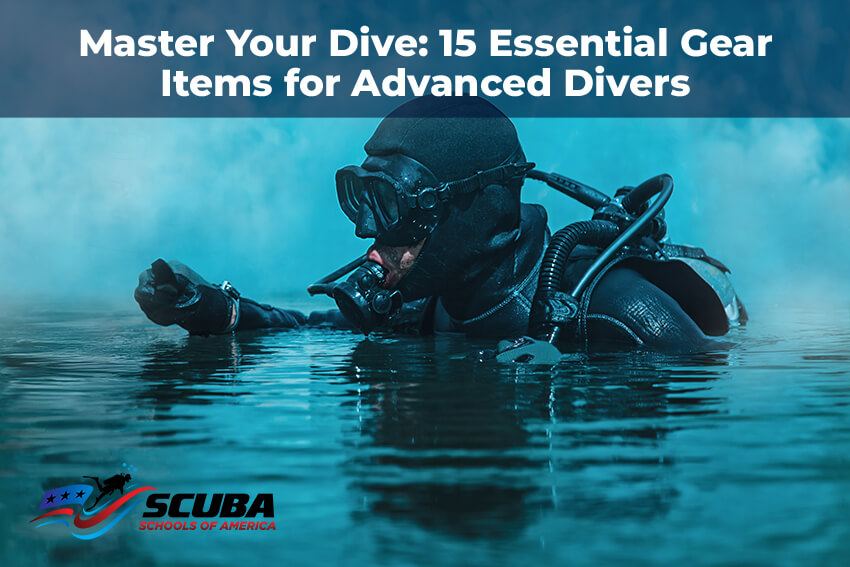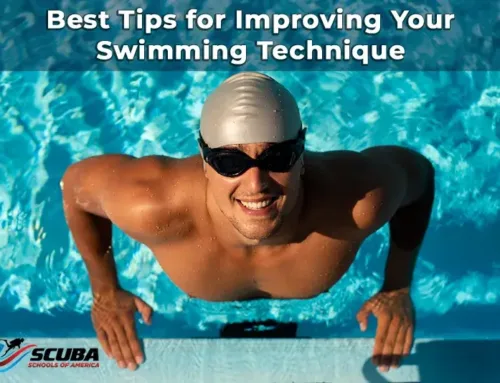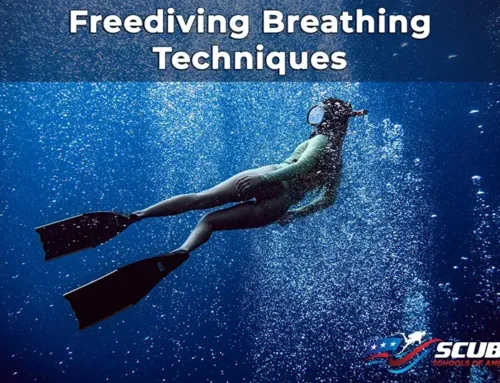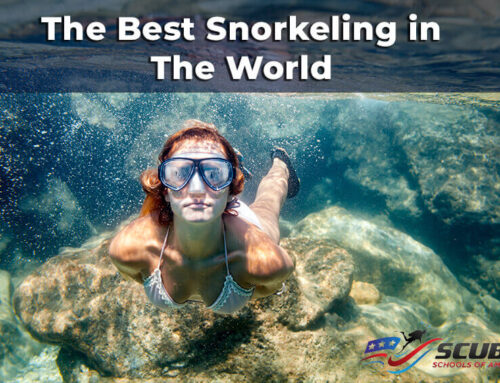If you are on your way to becoming an advanced open-water diver, investing in your own scuba gear is a smart decision. As you progress in your diving journey, you’ll find that having personalized equipment can significantly enhance your experience. Diving in deeper and more advanced locations requires specialized gear that ensures both safety and comfort. Scuba Schools of America, a renowned institution for diver training, emphasizes the importance of having your own gear tailored to your needs. This approach not only provides a better fit but also ensures reliability, which is crucial when diving in challenging environments.
Advanced divers often encounter more complex conditions, such as stronger currents, colder water, and greater depths. These scenarios demand gear that performs reliably under pressure. Therefore, we’ve compiled a list of 15 must-have dive gear items for advanced divers. Each piece of equipment plays a vital role in enhancing your diving experience and ensuring your safety underwater. With the right gear, you’ll be well-prepared to explore the fascinating underwater world with confidence and ease.
1. Dive Mask
The dive mask is arguably the most critical piece of dive gear to purchase first. An ill-fitting mask can ruin a dive, causing discomfort and even panic if you struggle to clear it underwater. The challenge is that everyone has a slightly different face shape, so a mask that fits one person perfectly might leak for another.
When buying a mask, it’s wise to visit your local dive center to try on several options. This hands-on approach allows you to find a mask that fits snugly and seals properly against your face. Here’s how to check the fit:
- Place the mask on your face without using the strap.
- Breathe in through your nose and hold your breath.
- If the mask stays on your face without falling off, it’s a good fit.
Scuba Schools of America highly recommend personalizing your dive gear, especially masks, to ensure comfort and effectiveness underwater. A well-fitting mask enhances your overall diving experience by providing clear vision and minimizing the risk of leaks.
2. Snorkel
Having your own snorkel is incredibly convenient, especially on days when you’re taking a break from scuba diving and want to go snorkeling. With just a mask and a snorkel, you’re all set to explore the shallow waters. Many people overlook the importance of a snorkel in scuba diving, but it plays a crucial role. It allows you to breathe on the surface without using the air from your tank, thereby conserving it for the actual dive.
Importance of Snorkels in Dive Certification
Snorkels are also required during dive certification. They are useful for keeping ocean spray out of your mouth while on the surface and for snorkeling with or without your tank.
Choosing the Right Snorkel
At first glance, a snorkel seems simple enough: a curved tube that lets you breathe while floating face-down on the surface. However, when you see the wide variety of snorkels available at your local dive store, the numerous options and features can be overwhelming. Don’t worry—focus on the basics.
What It Does: As a diver, a snorkel helps you conserve air in your tank when you’re on the water’s surface.
What to Look For: Comfort is key. You want a mouthpiece that feels good and allows for easy, dry breathing. Many snorkels that aim to stay dry end up being bulkier and harder to breathe through. The best snorkel for you will strike a balance between ease of breathing and dry comfort. Keep in mind that larger snorkels create more drag in the water. Additionally, consider how the snorkel attaches to your mask. Look for a durable, yet simple and easy-to-use attachment.
Our Advice: If you don’t plan on doing a lot of snorkeling, this is one piece of gear where you can opt for a simpler, more basic model. A straightforward snorkel will suffice, allowing you to focus on more critical gear investments.
3. Scuba Fins
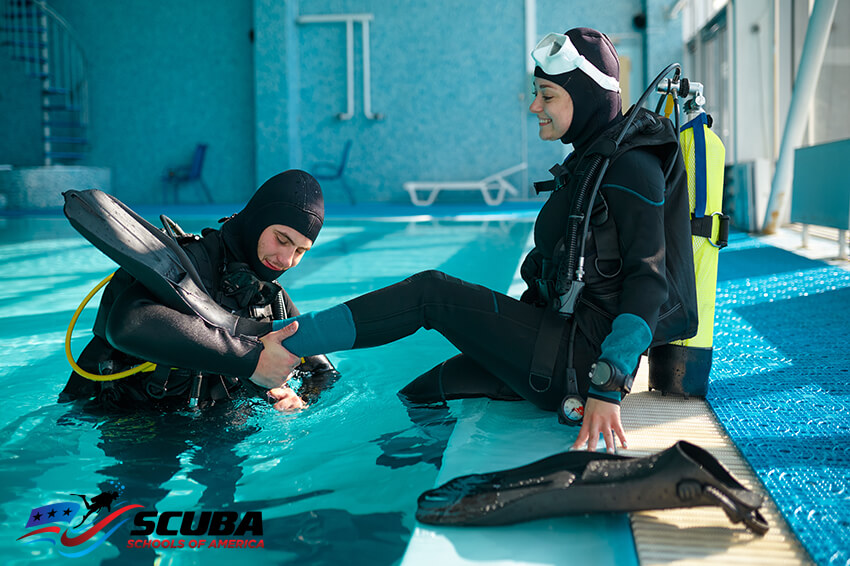
Fish don’t have legs for the simple reason that fins are the best way to move through water. So if you’re going to play in the fish’s territory, you need a good set of fins too. Scuba Schools of America emphasizes the importance of choosing the right fins for a more enjoyable and efficient diving experience.
What Fins Do
Fins translate power from the large leg muscles into efficient movement through water, which is 800 times denser than air. They are essential dive gear, helping us move with ease underwater, adjust our position, and even escape danger in an emergency. Fins are also useful for snorkeling, making it a good idea to have your own pair rather than renting every time you go diving or snorkeling.
Benefits of Owning Your Own Fins
Having your own fins ensures a comfortable fit and better quality compared to using rental fins. There are different options available when buying fins, with some being heavier than others, and everyone has personal preferences. Scuba Schools of America recommends testing out various brands and types of fins in the water, if possible, to find the best fit for you. You can wear boots with open-heel fins or go barefoot with closed-heel fins.
What to Look For: Comfort and Efficiency: When trying on fins, look for a snug fit that doesn’t pinch your toes or bind the arches of your feet. If you can’t wiggle your toes, the fins are too small. The efficiency of fins is largely determined by their size, stiffness, and design. Divers with strong leg and hip muscles can efficiently use bigger, stiffer fins. Smaller or less conditioned divers will be more comfortable with smaller, more flexible fins. Also, ensure that buckles and straps are easy to use.
Our Advice: Choosing the right pair of fins is important to prevent muscle fatigue and cramping. Good fins will enhance your enjoyment of diving, while bad ones can ruin it. Here are some considerations to keep in mind when choosing a pair
Full-Foot or Open-Heel Fins?
- – Full-foot fins don’t require dive booties and are best suited for warm waters.
- – Open-heel fins have adjustable straps for different booties or family members and children as they grow. They are easier to put on, especially with a pull tab added to the strap. The dive booties required with open-heel fins also provide foot protection and comfort while diving and walking.
By following these guidelines and advice from Scuba Schools of America, you can select the right fins that offer both comfort and efficiency, enhancing your overall diving experience.
4. Wetsuit
Wetsuits are versatile gear used for scuba diving, snorkeling, freediving, and various other watersports. While rental wetsuits are available, they may be worn out, have holes or rips, or not fit you perfectly due to frequent use.
What They Do
Exposure suits insulate against the cooling effect of water, which can sap body heat 25 times faster than air. The type and thickness of exposure protection required depend on dive conditions.
A wetsuit keeps you warm in two main ways:
Keeping Water Out: Water that enters the suit absorbs some of your body heat and takes it away when it exits. Therefore, a wetsuit must prevent the cold ocean from flushing through it. A snug fit, evenly tight all over, is crucial to minimize the space for water to flow along your skin.
Wetsuits are not always necessary for scuba diving in warm locations, but they can still protect against sunburn and stings. When buying a wetsuit, consider the following:
- The water temperatures where you typically dive and the corresponding wetsuit thickness needed.
- Whether a full-length or short wetsuit would be more suitable.
- Your preference for a wetsuit that zips up at the front or back.
- If you need neoprene socks, gloves, or a hood for additional warmth.
Scuba Schools of America provides equipment rentals and sales, including a range of wetsuits to suit different diving conditions and preferences.
5. Buoyancy control device
A buoyancy control device (BCD) is indispensable for adjusting buoyancy underwater. It prevents you from kicking along the bottom or floating at the surface.
Buying your first buoyancy control device—commonly known as a BCD or BC—can be quite daunting. With a vast array of options available and significant design advancements in the past decade, the choice can be overwhelming. There are lightweight, travel-friendly models and more technical backplate and wing systems, which are gaining popularity in the recreational diving market. No matter your preferences, there is a perfect BC out there for you.
Each BCD has its own unique fit, style, and feature placement. Therefore, it’s important to try several different models before making a purchase. Owning a BCD that fits well and functions in a way that you are comfortable with enhances your diving experience.
6. Scuba Regulators
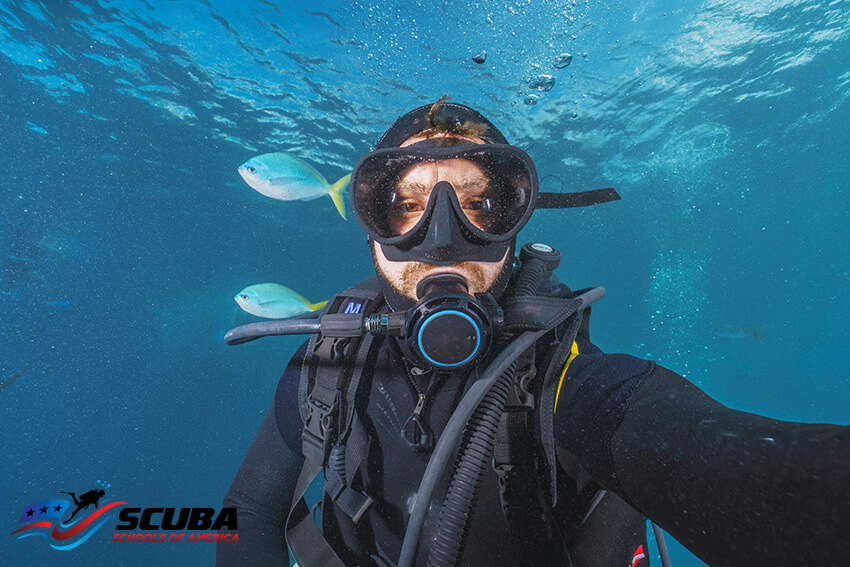
We cannot scuba dive without regulators! Regulators connect the air in the tank to our mouths and the BCD. Dive centers follow strict rules regarding the servicing and maintenance of their rental regulators. However, owning your own regulators provides peace of mind about their usage and care, and you’ll be the only one using the mouthpiece.
There are regulators to fit different budgets, but they are the most crucial piece of dive gear for safety, so it’s essential to invest in a good set.
What It Does
Your regulator converts the high-pressure air in your tank to ambient pressure so you can breathe it. It must also deliver air to other places, such as your BC inflator and alternate second stage.
What to Look For
High Performance: The best regulators can deliver a high volume of air at depth, under heavy exertion, and even at low tank pressures.
Diving Conditions: Consider where you do most of your diving. For cold water diving, invest in a regulator rated for cold water. These models are usually environmentally sealed to prevent cold water from entering the first stage, or they have a special coating to stop ice crystals from forming, ensuring they perform well without freezing up.
Comfort: Look for a comfortable mouthpiece, although you can change this later. Ensure the second stage isn’t too heavy to avoid jaw fatigue during long dives.
Our Advice
Do your homework to find the best regulator available for your budget. Talk to dive store personnel and experienced divers at Scuba Schools of America. Scuba Schools of America offers expert training and certification, providing valuable insights into selecting the right gear. With their guidance, you can ensure you choose a regulator that meets your needs and enhances your diving experience.
7. Weight belt/pockets
A weight belt is commonly used for scuba diving, though some divers prefer integrated weights that fit into their BCD. Weights are essential in scuba diving to help you maintain buoyancy and stay underwater with ease.
Lead weights can typically be rented from a dive center, as most divers do not travel on their own due to their heaviness. However, having your own belt or integrated weight pockets is beneficial, as it allows you to become familiar with their usage and ensures a perfect fit for your diving needs.
8. Torch
A waterproof torch is an essential tool for cave and cavern diving, as well as for searching crevices to discover hidden marine life. It is also indispensable for night diving, providing the illumination needed to safely navigate and explore the underwater environment. When selecting a torch, prioritize quality and reliability to ensure it withstands numerous dives. A durable, high-performance torch enhances your diving experience, offering consistent light and peace of mind in various diving conditions.
9. Tank banger
Tank bangers are handy tools for getting the attention of other divers underwater. They come in a few different forms. One popular type features a hard ball attached to a strap that fits around your tank. When you need to get your buddy’s attention, you simply pull and bang the ball against the tank, creating a sound that can be easily heard underwater.
Another style of tank banger is a metal stick, often referred to as a lobster tickler. This stick can be attached to your BCD or kept around your wrist, and you can use it to tap on the tank to make a noise.
Tips for Using Tank Bangers
Check Local Regulations: Some dive destinations do not allow tank bangers. Always check the local regulations before using one to ensure you are in compliance.
Use Sparingly: Many divers appreciate the tranquility of scuba diving, so it’s important not to overuse your tank banger. Reserve its use for emergencies or when you need to communicate something significant to your buddy.
10. Dive knife
A dive knife is a valuable tool for freeing marine life trapped in fishing nets or other human-made ocean debris. While it is a useful piece of dive gear, it is crucial to use it responsibly. Be aware that dive knives are banned in some locations, so always check local regulations before diving with one.
Why Do I Need a Dive Knife?
Many divers carry a dive knife as a versatile tool for various situations. For many, having a knife provides peace of mind.
Practical Uses Underwater:
Self-Rescue: Dive knives are typically carried in case a diver gets tangled in fishing lines, seaweed, or kelp.
Digging or Prying: They can also be used to dig or pry during a dive.
11. Diving slates
Diving slates serve as valuable tools for communication underwater, especially when hand signals aren’t sufficient for conveying your message. Carrying a diving slate and pencil can assist you in effectively communicating your thoughts and instructions beneath the surface.
12. Dive Computers
Dive computers serve as your underwater guardian angel, providing essential safety information during dives. With today’s advanced technology, manufacturers offer impressive features, such as GPS tracking and buddy communication capabilities.
Importance of Dive Computers
A dive computer is a crucial piece of gear for frequent scuba divers, ensuring safety by calculating no-decompression limits and monitoring ascent rates and tank pressure. Unlike traditional diving tables, dive computers offer greater accuracy and convenience. Owning your own computer empowers you to take control of your safety and conveniently log your dives.
Functions and Features
Dive computers continuously monitor depth and bottom time, automatically tracking your no-decompression status to keep you informed and safe. They also monitor ascent rates, tank pressure, and provide information on safe flying intervals. Some advanced models even allow gas switching and offer freedive modes.
Choosing the Right Dive Computer
When selecting a dive computer, prioritize user-friendliness, ensuring easy access to essential information like depth, time, decompression status, and tank pressure. Consider mounting options, battery life, and charging methods. Dive computers come in various styles to suit different budgets, but they all serve the same purpose of enhancing diver safety.
Advice for Choosing a Dive Computer
Evaluate your diving needs and future aspirations to select a computer that aligns with your goals. If you plan to explore deeper depths or venture into technical diving, invest in a computer that can grow with you. Study the features of different models and choose one that will accommodate your evolving diving adventures and training.
13. Camera
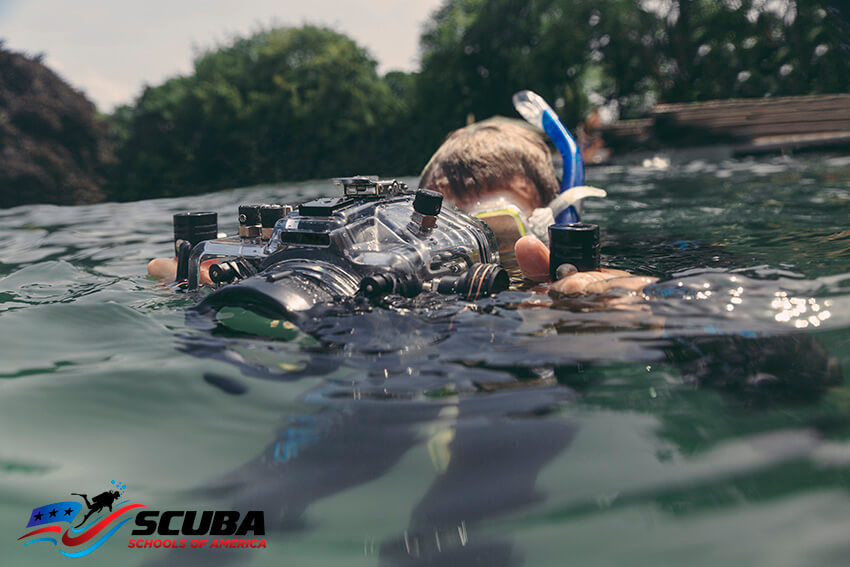
As an advanced diver, you should now have good control over your buoyancy and other essential diving skills. This means you’re ready to take a camera on your dives if you wish.
Remember that it’s dark underwater, and the deeper you go, the less light there is. To capture good shots, you’ll need to use a flash, so ensure your camera has adequate flash capability or bring additional lighting.
Underwater cameras allow you to capture special moments from your dives to cherish for years to come. When using an underwater camera, always prioritize safety, maintain good buoyancy control, and protect marine life over getting the perfect shot.
14. Compass
A compass is invaluable for navigating dive sites with few natural landmarks to guide you. The SSI Navigation Specialty Program trains you to use a compass underwater and equips you with the skills needed to effectively find your way around dive sites.
15. Surface marker buoy
If you are a certified diver planning to dive without an instructor or guide, a surface marker buoy (SMB) is essential. You carry an SMB during your dive and inflate it using your regulator when you’re ready to surface. This alerts boats to your presence and ensures a safe ascent.
Now that you have a list of your diving essentials, which one will you buy first?
At Scuba Schools of America, we want you to choose the right scuba gear for your needs and know how to care for it properly to maximize your investment. We offer almost every brand of gear and provide the best online shopping options. As one of our customers, you can purchase from our online store and have your gear shipped anywhere in the world!

